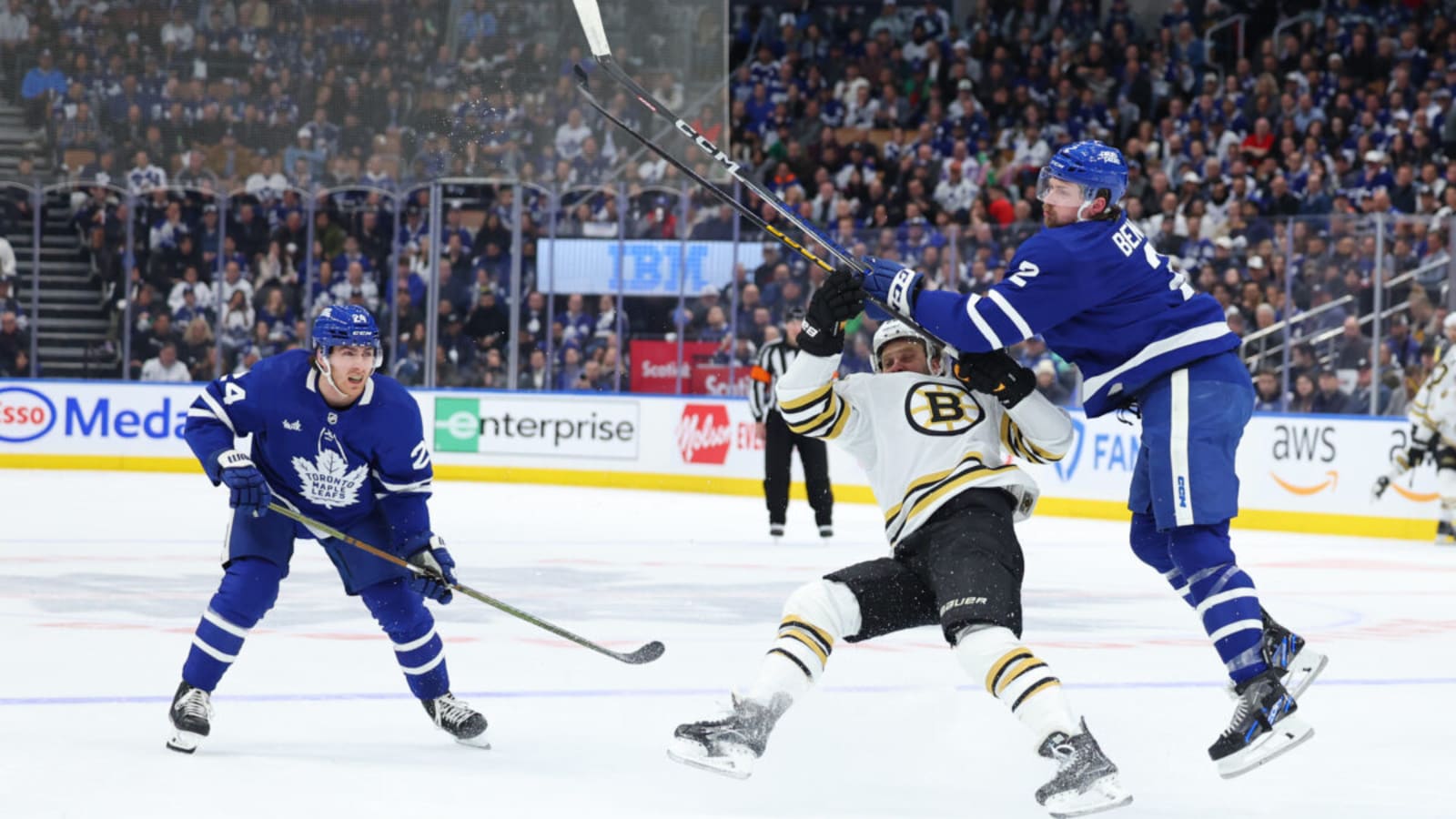
Training camp is moving quickly, and the Toronto Maple Leafs are already beginning to take shape. There are roster questions, health updates, and even old debates resurfacing about what kind of team Toronto needs to be if it wants to compete in a brutally tough Atlantic Division.
Three storylines, in particular, have bubbled to the surface this week: the return of Simon Benoit after a short injury layoff, Anthony Stolarz’s opportunity to prove he can be a true number-one goaltender, and the ongoing conversation about whether the team needs an enforcer in the post-Ryan Reaves era. Together, these stories point to a bigger theme: this season isn’t just about talent. It’s about roles, identity, and durability.
Item 1: Benoit Healthy, Ready for a New Challenge on Defence
On the blue line, Simon Benoit has returned to full practice after missing a portion of training camp with what the team called a minor upper-body “bump.” It’s the kind of early-season hiccup that could have been more worrying had it been last year, when back spasms left him starting the season at less than full health. This time, though, he seems calm and confident.
What’s new for Benoit is not his health, but his position. Head coach Craig Berube and his staff have asked him to play on his weak side, a challenge for any defenseman, especially one who has never done it at the NHL level. It’s an experiment that could either deepen the Maple Leafs’ defensive depth or expose a hole.
The good news is that Benoit has already shown flashes of growth beyond being a stay-at-home blueliner. His work in last season’s playoffs—setting up Max Domi’s overtime winner in Game 2 against the Ottawa Senators, then scoring the game-winner himself in Game 3—suggests he may have more to give. For a player once seen as a limited bruiser, this new role could turn into a surprising opportunity.
Item 2: Is This the Season Anthony Stolarz Becomes an Elite NHL Goalie?
If Benoit represents the Maple Leafs’ experiment on defence, Stolarz is their gamble in goal. The 31-year-old journeyman turned in the best season of his career in 2024-25, finishing with a .926 save percentage, a 2.14 goals-against average, and 21 wins in 34 appearances. Those numbers weren’t just good—they were elite.
Stolarz kept Toronto afloat during stretches when Joseph Woll was sidelined, and when healthy, gave them the kind of consistency fans haven’t seen since the prime of Frederik Andersen. But durability remains the key. A mid-season injury slowed him, and a concussion in the playoffs derailed the momentum of what could have been a Cinderella run.
Now, with Woll away on personal leave and no clear timetable for his return, the net is Stolarz’s to lose. If he can stay healthy and start 40 to 45 games with similar numbers, Toronto won’t just have a capable starter—they’ll have one of the best goaltenders in the NHL.
Item 3: Do the Maple Leafs Need an Enforcer This Season?
That brings us to the old debate, one that refuses to die in Toronto: the issue of toughness. The decision to send Ryan Reaves to the San Jose Sharks over the summer left many wondering who, if anyone, would fill the role of “enforcer.”

On Real Kyper & Bourne, Sam McKee made the case that the Maple Leafs are now exposed. With rivals like the Montreal Canadiens stocking up on players like Arber and Florian Xhekaj, he argued Toronto doesn’t have an answer. Dakota Joshua, brought in from the Vancouver Canucks, plays a gritty game but is hardly in the heavyweight class. Domi is willing, but he won’t be going toe-to-toe with true enforcers every night. Steven Lorentz, Scott Laughton, and certainly Easton Cowan aren’t going to do that job, either.
The question is whether Toronto needs anyone to. After all, Reaves fought just once last year, and Joshua, Domi, and others have shown they can step in situationally without being one-dimensional. Perhaps the organization now feels that team DNA, rather than hired-gun DNA, is the best way forward.
What’s Next for the Maple Leafs?
These three stories tie into the same question that has hovered over the Maple Leafs for years: what kind of team do they want to be when the regular season opens? Benoit is trying to show he can be more than a physical depth defender. Stolarz is fighting to prove last year was not a fluke but the start of something bigger.
The debate about toughness is really about identity—whether Toronto wants to arm itself for trench warfare in the Atlantic Division or trust in a lineup built more on balance and versatility. None of these questions will be fully answered in October, but the groundwork is already being laid.
Fans have seen this movie before: October optimism, November momentum, and then the long, grinding reality of an 82-game season. The season is young, but the stakes are clear. For the Maple Leafs, the answers won’t come in the headlines, but in the habits that form now.
More must-reads:
- Penguins have to consider drastic changes after blowing yet another huge lead
- Quinn Hughes makes immediate impact, scores goal in debut with Wild
- The '2025-26 bowl game host cities' quiz
Breaking News
Trending News
Customize Your Newsletter
 +
+
Get the latest news and rumors, customized to your favorite sports and teams. Emailed daily. Always free!








